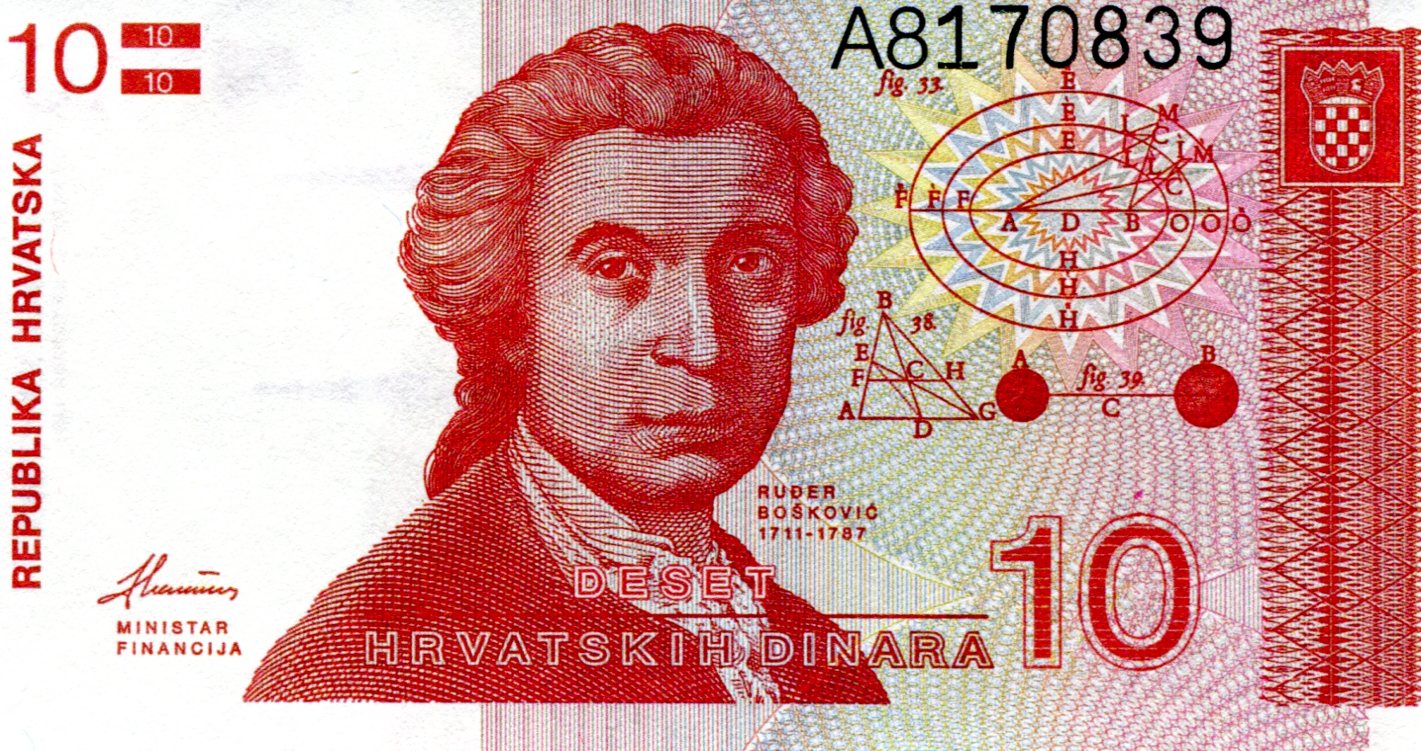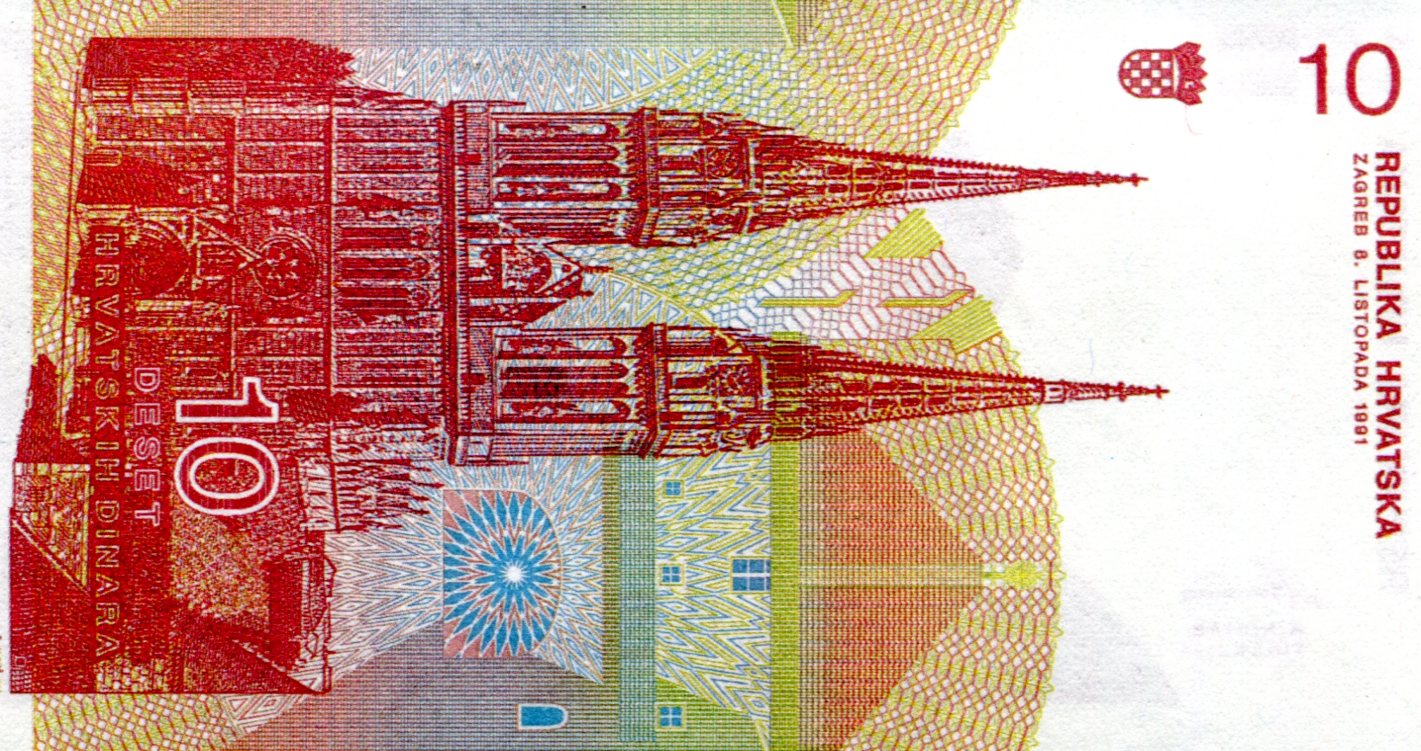Seasonal lights are going dark around here, but as of this evening anyway, a cluster of five houses that includes mine still displays colorful lights: two houses on my side of the street and three on the other side. I suspect that at least one of my neighbors wanted to keep them up past Orthodox Christmas, which seems like a good reason to me.
Time to make the acquaintance of Roger Joseph Boscovich, S.J., (1711-87) or as they write in Croatia, Ruđer Josip Bošković. Or, as the man of the Enlightenment he surely was, Rogerius Iosephus Boscovicius, because Latin is where it was at.
He was on the obverse of all of the 1991 transitional currency after the independence of Croatia, from 1 dinar to 50,000 dinars. I have a 10-dinar note.
A native of Dubrovnik, though known as Ragusa in those days, “[Boscovich] developed the first coherent description of atomic theory in his work Theoria Philosophiae Naturalis, which is one of the great attempts to understand the structure of the universe in a single idea,” writes Fairfield University. “He held that bodies could not be composed of continuous matter, but of countless ‘point-like structures.’ ”
Funny, I remember discussions of atomic theory always starting with John Dalton, so maybe Boscovich’s ideas count as a precursor, or maybe textbooks in the English-speaking world are loath to give him the credit he deserves. I’m not enough of a historian of science — not at all — to know. Atomic theory must of seemed a radical notion 200 years ago in any case.
The article calls Boscovich “a physicist, geometer, astronomer and philosopher.” His Wikipedia entry calls him a “physicist, astronomer, mathematician, philosopher, diplomat, poet, theologian, Jesuit priest, and a polymath.” Whatever the aptness of those terms, clearly a weighty intellect. Who’s really a polymath any more? Anyone?
In 1994, Croatia retired its dinars in favor of a currency called the kuna, and so far has kept it in the face of the euro. These days, one kuna fetches about 15 U.S. cents.
On the reverse, Zagreb Cathedral. It’s horizontal on the note but certainly vertical in Zagreb. I’d hope so anyway.
In full, Zagreb Cathedral of the Assumption of the Blessed Virgin Mary, first completed in 1217 but destroyed by the Mongols not much later in that same century. Oops. It was rebuilt not long afterward, and at least the Ottomans didn’t destroy it, though earthquakes have done damage over the years, including as recently as 2020.



